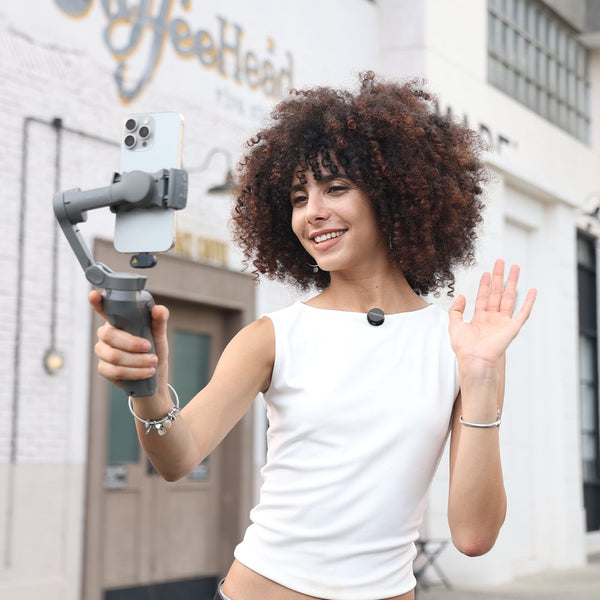In the fast-growing world of online learning, copywriting courses are increasingly shifting to virtual classrooms. While strong content and structured lessons are critical, one overlooked factor often decides whether students remain attentive: audio quality.
When learners struggle to hear the instructor clearly, their attention wanes, and the overall effectiveness of the course drops. Poor audio filled with echoes, background noise, or uneven volume can lead to frustration, decreased comprehension, and even student dropouts. On the other hand, clear and consistent audio delivery enhances comprehension, keeps students engaged, and builds trust between instructor and learner.
This is why investing in a reliable microphone—particularly a wireless microphone setup—can be a game-changer for trainers. For online copywriting instructors, smooth and professional audio ensures your lessons resonate with learners and leave a lasting impression.
Setting Up a Professional Home Studio for Virtual Training
Creating an effective virtual copywriting course goes beyond logging into Zoom or Google Meet. To establish authority and deliver a seamless experience, you’ll need a professional home studio setup. Key considerations include:
-
Quiet environment: Choose a room with minimal outside noise and soft furnishings to reduce echo.
-
Good lighting: Pair your audio with clear visuals by using a ring light or softbox.
-
Stable internet connection: Lag-free audio and video are essential for smooth delivery.
-
Ergonomic workspace: A comfortable desk and chair will help you stay focused for longer sessions.
At the center of it all is your audio setup. While laptops and webcams come with built-in microphones, they rarely deliver the clarity needed for effective teaching. A wireless microphone or a mic Lavalier offers professional-grade sound while freeing you from the limits of being tethered to your desk.
Benefits of Using a Wireless Mic in Virtual Copywriting Training
Switching to a wireless microphone provides several advantages that directly enhance the learning experience:
-
Mobility and Freedom
A wireless mic or good wireless lavalier mic allows you to move around while explaining concepts, gesturing naturally, or sharing examples without being stuck in front of your laptop. This creates a more engaging, dynamic presence for learners. -
Professional Audio Quality
Wireless mics and the best wireless lavalier mic options capture your voice clearly, removing muffled sounds or inconsistent audio that distracts students. -
Reduced Background Noise
Many modern systems, such as a Lavalier wireless mic for iPhone, include built-in noise reduction, ensuring your lessons stay focused on your words—not household interruptions. -
Consistency Across Sessions
Students come back for your expertise, and consistent high-quality audio builds credibility and trust. -
Better Engagement
Clear audio, especially from a good Lavalier mic, makes learners more likely to participate in discussions, ask questions, and follow along with exercises.
Best Practices for Keeping Students Engaged in a Virtual Training Setup
Even with a great wireless or Lavalier mic, student engagement requires strategy. Here are proven techniques:
-
Interactive exercises: Assign quick writing challenges where students craft headlines, slogans, or short ad copy live.
-
Q&A sessions: Use polls, breakout rooms, or direct Q&A to encourage participation.
-
Use storytelling: Frame lessons around real-world examples to make concepts relatable.
-
Keep sessions concise: Long lectures can be draining. Break your lessons into shorter, focused modules.
-
Encourage peer feedback: Allow students to share and critique each other’s copy, simulating a real copywriting workshop.
Combined with clear, professional audio from a good Lavalier mic, these practices help learners feel part of an active, engaging class.
Essential Tools for Delivering Effective Copywriting Lessons Online
Apart from your wireless mic, a few other tools help maximize your virtual teaching impact:
-
Video conferencing platforms: Zoom, Microsoft Teams, or Google Meet for live interaction.
-
Collaboration apps: Google Docs, Miro, or Notion for group exercises.
-
Screen recording software: Loom or OBS Studio for creating pre-recorded lessons.
-
Noise reduction software: Krisp or RTX Voice for eliminating unwanted background noise.
-
Headphones: Essential for monitoring your audio during sessions.
When paired with a good wireless lavalier mic, these tools create a seamless virtual classroom that mimics in-person learning.
Choosing the Right Wireless Microphone for Virtual Copywriting Classes
Not all wireless microphones are the same. For trainers, the key factors include:
-
Ease of use
Plug-and-play models save time compared to complex studio gear.
-
Portability
Lightweight systems are ideal if you teach from different locations.
-
Compatibility
Ensure your mic works with your chosen platform (Zoom, Teams, Google Meet).
-
Battery life
Long-lasting wireless systems prevent interruptions mid-class.
-
Budget
While premium models offer advanced features, affordable options can still deliver excellent sound.
Recommended Models
-
Maono Wave T5 Wireless Microphone

Ideal for professional trainers, the Maono Wave T5 delivers crisp, stable audio with excellent noise reduction. Its long battery life and easy compatibility with laptops and mobile devices make it perfect for extended teaching sessions. Plus, get the chance to avail a 15 percent discount if you purchase a Maono T5 today, limited stocks only so hurry!
-
Maono Wave T1 Mini Wireless Microphone

A more compact and budget-friendly option, the Maono Wave T1 Mini is great for beginners. It’s portable, user-friendly, and provides reliable audio quality for instructors starting out with virtual training.
FAQs:
1. Why do I need a wireless mic for virtual copywriting training?
A wireless mic ensures clear, distraction-free audio and allows you to move freely during lessons, making sessions more dynamic.
2. What are the best wireless mics for online teaching?
The Maono Wave T5 and Maono Wave T1 Mini are excellent options depending on your budget and needs.
3. How do I set up my wireless mic with Zoom or Teams for training?
Simply connect the receiver to your laptop or mobile device, select it as your input device in Zoom or Teams settings, and you’re ready to teach.
4. Can I use a wireless lavalier mic instead of a headset mic for online courses?
Yes. A good Lavalier mic clips onto clothing and provides a natural, hands-free option that’s often less intrusive than headsets.
5. What’s the difference between USB wireless mics and XLR wireless mics for trainers?
USB wireless mics are plug-and-play, great for beginners. XLR systems provide higher audio fidelity but require an audio interface.
6. How does good audio improve student focus in copywriting classes?
Yes, but a good wireless Lavalier mic offers more flexibility for movement and engagement.
7. What’s the ideal home studio setup for online copywriting training?
A quiet room, proper lighting, reliable internet, and a good wireless mic are the essentials.
8. How do I reduce background noise while teaching virtually?
Use a wireless mic with noise-canceling features and consider noise reduction software like Krisp.
9. Can I deliver group copywriting exercises effectively in a virtual setting?
Yes. Use breakout rooms, shared documents, and interactive collaboration tools.
10. How do I record my sessions with high-quality audio for students to replay?
Use screen recording software while ensuring your wireless mic is selected as the input device.
11. How do I keep learners engaged in a copywriting course online?
Incorporate interactive exercises, polls, and peer feedback while maintaining clear audio communication.
12. What interactive tools work best alongside a wireless mic setup?
Google Docs for collaborative writing, Miro for brainstorming, and Zoom polls for engagement.
13. How do I encourage students to practice copywriting exercises live?
Assign quick tasks during class and invite students to share their work for feedback.
14. What role does clear audio play in building trust with students?
Consistent, professional audio enhances credibility and makes you appear more reliable.
15. How can I avoid distractions when teaching online copywriting lessons?
Mute notifications, use noise-blocking software, and teach from a dedicated quiet space.
16. What is the most affordable wireless mic for beginner trainers?
The Maono Wave T1 Mini offers a balance of quality and affordability.
17. Is it worth investing in expensive wireless audio gear for copywriting training?
If you plan to teach long-term, yes. Clear audio can make or break your students’ learning experience.
18. Can I repurpose my podcasting mic for virtual copywriting classes?
Yes, but wireless mics offer more flexibility for movement and engagement.
19. What software works best with wireless mics for virtual training?
Zoom, Microsoft Teams, Google Meet, and screen recording tools like OBS or Loom.
20. How do I balance cost and quality when building my virtual training setup?
Start with essential equipment—a good wireless mic, lighting, and stable internet—then upgrade gradually.
Conclusion
In virtual copywriting training, clear and reliable audio is the bridge between your expertise and your students’ learning experience. A wireless microphone or mic Lavalier not only ensures professional sound but also gives you the freedom to teach with energy, confidence, and engagement.
Whether you’re setting up your first home studio or refining your online teaching toolkit, investing in the right audio gear—such as the Maono Wave T5, Maono Wave T1 Mini, or the best wireless Lavalier mic—is a smart step toward delivering impactful, engaging copywriting lessons.
When your voice is heard clearly through a good wireless Lavalier mic, your ideas resonate more deeply, and your students walk away with stronger skills and a better learning experience.



